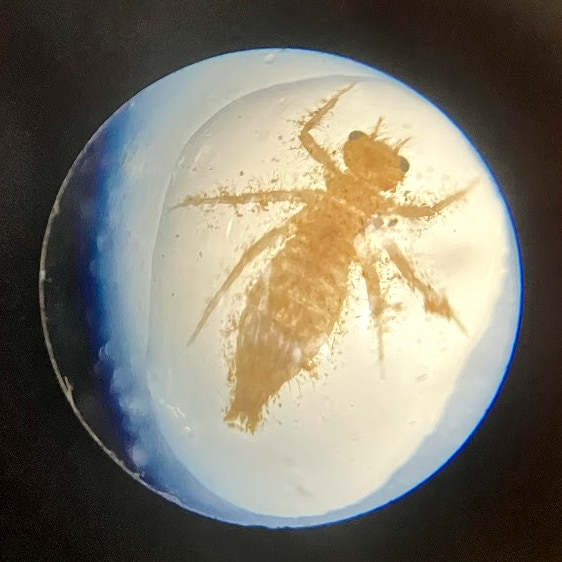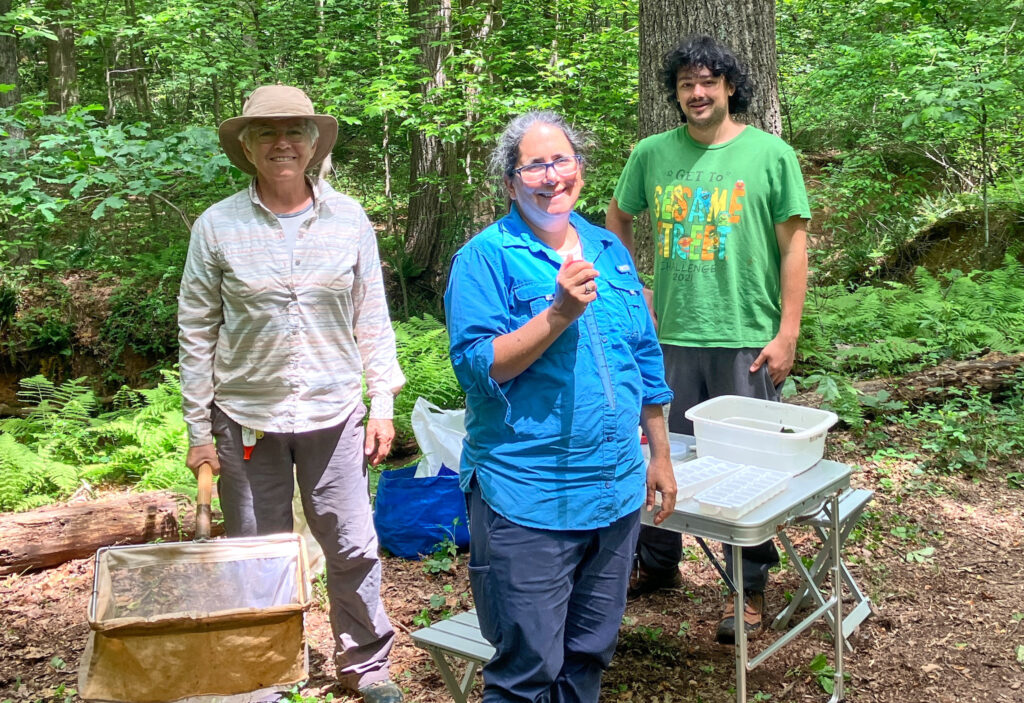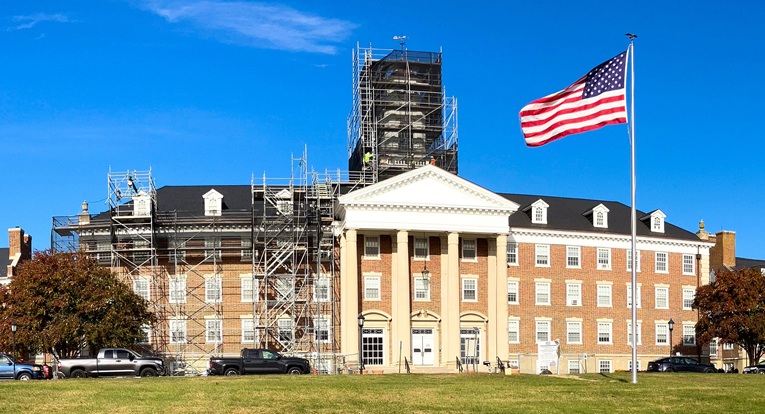Since March 2023 Greenbelt residents have been leading an effort to characterize the biodiversity of benthic macroinvertebrates living in Canyon Creek, a small stream that flows through the North Woods tract of the Greenbelt Forest Preserve. Benthic macroinvertebrates are small animals, visible to the naked eye, that live at the bottom of streams: in the mud and sand, under rocks and in clumps of sodden leaves. Not only are these creatures fascinating, but they can tell us about the overall health and vitality of the stream.
Benthic macroinvertebrates include the larval, or juvenile, stages of many types of insects, as well as some adult insects, aquatic worms, leeches and snails. Some, such as stonefly, mayfly and caddisfly larvae, are more sensitive and can only live in clean water. Others, like mosquito larvae and aquatic worms, can survive almost anywhere, even if the water is polluted. Scientists have developed metrics that assign a stream health category from poor through excellent based on which macroinvertebrate groups are present in the stream.
In 2023 Catherine Plaisant and Mark Christal assembled an initial team of volunteers to learn how to conduct a benthic survey. Christal provided hands-on training and, before moving to Texas, donated the net and microscope that had been used in a previous benthic survey project in Beltsville Agricultural Research Center’s Beaverdam Creek. Two surveys were conducted in 2023 and 2024.
More recently, the team changed to include American University Environmental Science professor Karen Knee and her student, Charles Sajonia. With Plaisant they continued using the Creek Critters app to identify the creatures they found and assign a stream health rating. This free app was developed by Nature Forward for citizen scientists and uses a simple dichotomous key to identify the most important macroinvertebrate groups based on characteristics like whether the creature has a shell or how many legs it has. It also includes pictures. The team finished the third survey in May, just in time for Sajonia’s graduation.
Macroinvertebrates from the “most sensitive” and “sensitive” groups, including dragonfly, mayfly and cranefly larvae, were found during almost every sampling event. One of the most interesting is the casemaker caddisfly larva, which builds its own shell out of materials it finds in the environment, such as sand, small pebbles, and scraps of tree bark. The survey team has also found small fish, frogs, amphibian eggs and salamanders of various sizes. These vertebrate animals don’t officially impact the stream health score – which has ranged from fair to good on different days – but their presence suggests that the water is clean and well-oxygenated, since amphibians are sensitive to pollution and low oxygen levels. These results are reassuring for a small creek receiving a large amount of stormwater from Ridge and Laurel Hill Roads. The creek’s watershed includes Greenbelt Homes, Inc. homes and yards as well as part of the Greenbelt Forest Preserve, so land use and management decisions in both of these areas affect it.
Plaisant and Knee hope to continue sampling in the coming months to confirm the results.





